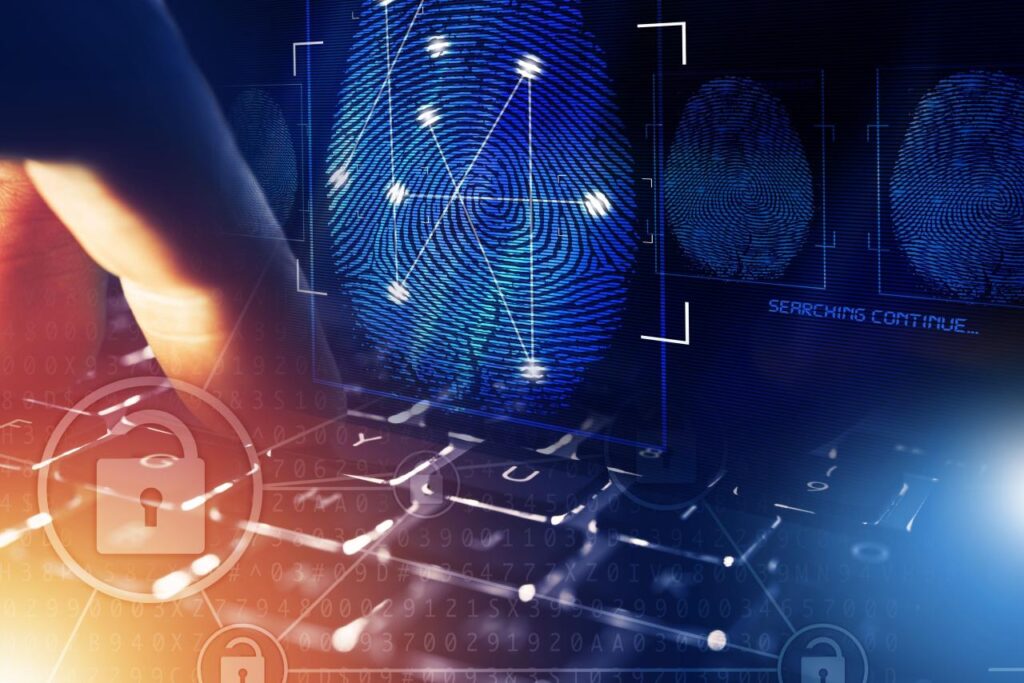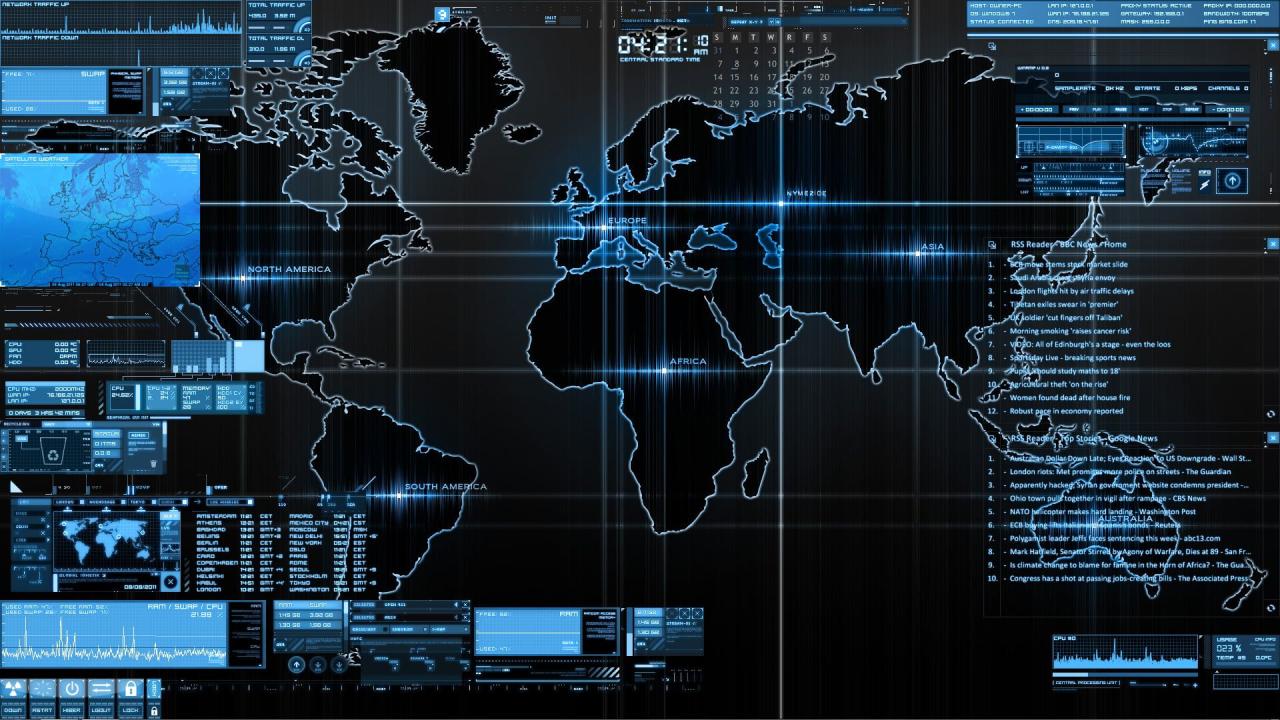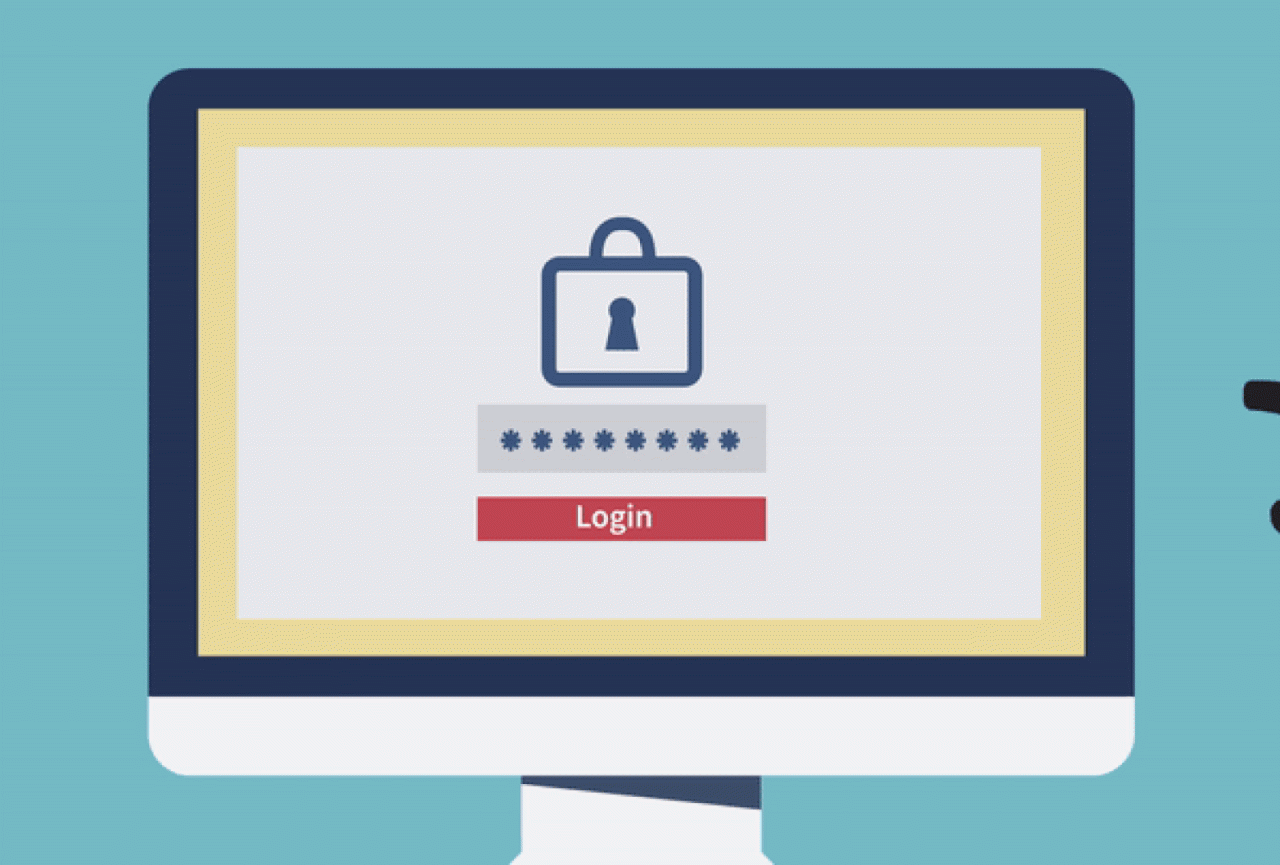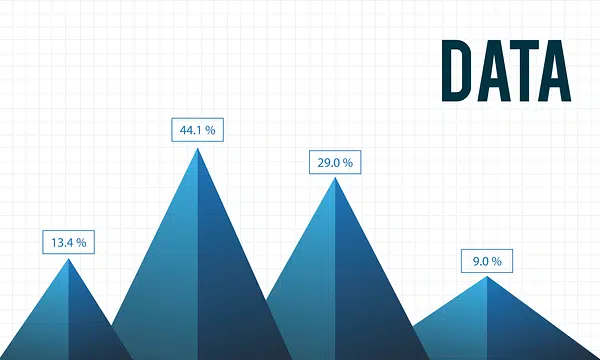In the interconnected digital realm of the 21st century, where virtually every facet of business, communication, and personal life relies on vast networks of data, the integrity and security of information have become paramount. Cyber threats, once a distant concern for a select few, are now a daily reality, evolving in sophistication and volume at an unprecedented pace. Consequently, robust cybersecurity defenses are no longer a luxury but an absolute necessity – the essential digital gear required for navigating the complex and often perilous online landscape. This isn’t merely about preventing breaches; it’s about building resilient systems, fostering a security-conscious culture, and proactively safeguarding critical assets against an ever-growing array of sophisticated adversaries.
The Evolving Threat Landscape: Why Strong Defenses Are Crucial
To truly grasp the imperative of robust cybersecurity defenses, it’s vital to understand the dynamic and increasingly hostile environment that individuals, businesses, and governments operate within. The threats are no longer simple viruses; they are organized, intelligent, and financially motivated.
A. The Escalation of Cyber Attacks
The past decade has witnessed an alarming escalation in the frequency, scale, and sophistication of cyberattacks. These aren’t just isolated incidents but a global phenomenon impacting every sector.
- Financial Motivation: A significant portion of cyberattacks, especially ransomware and business email compromise (BEC) schemes, are driven by financial gain. Cybercriminals operate like illicit businesses, constantly seeking new revenue streams.
- State-Sponsored Hacking: Nation-states engage in cyber espionage, intellectual property theft, and even critical infrastructure disruption, posing a sophisticated and persistent threat.
- Rise of Ransomware: Ransomware, which encrypts data and demands payment for its release, has become a pervasive and devastating threat, crippling organizations and costing billions.
- Supply Chain Attacks: Attackers are increasingly targeting the software supply chain, compromising widely used software components to gain access to numerous downstream organizations, amplifying their impact.
- IoT Vulnerabilities: The proliferation of Internet of Things (IoT) devices, often with weak security, creates a vast attack surface, making them easy targets for botnets and data exfiltration.
B. The Broad Impact of Cyber Incidents
A successful cyberattack extends far beyond the immediate technical disruption, carrying severe and lasting consequences for organizations and individuals alike.
- Financial Losses: These include direct costs from incident response, recovery, legal fees, regulatory fines, and lost revenue due to operational downtime. Ransom payments add another layer of financial drain.
- Reputational Damage and Loss of Trust: Data breaches and prolonged outages severely erode customer trust and damage an organization’s brand reputation, which can take years to rebuild.
- Operational Disruption: Critical business operations can grind to a halt, leading to significant productivity losses and an inability to serve customers. This impacts everything from manufacturing to healthcare.
- Legal and Regulatory Penalties: Strict data protection regulations (e.g., GDPR, CCPA) impose hefty fines for non-compliance and data breaches, adding a significant financial and legal burden.
- Intellectual Property Theft: Loss of trade secrets, proprietary technology, and research & development data can severely impact a company’s competitive advantage and long-term viability.
These escalating threats and far-reaching impacts underscore the absolute necessity of comprehensive and proactive cybersecurity defenses as an integral part of any modern organization’s strategy.
Foundational Pillars of Robust Cybersecurity Defenses
Effective cybersecurity is not a single product or solution but a multi-layered, holistic strategy built upon several foundational pillars.
A. Identity and Access Management (IAM)
Identity and Access Management (IAM) is the cornerstone of cybersecurity, controlling who can access what resources and under what conditions. It’s about ensuring the right people have the right access at the right time.
- Strong Authentication: Implementing robust authentication mechanisms such as Multi-Factor Authentication (MFA) or Two-Factor Authentication (2FA) for all accounts, especially privileged ones. Biometrics, hardware tokens, and authenticator apps add significant layers of security beyond just passwords.
- Least Privilege Principle: Granting users and systems only the minimum necessary permissions required to perform their specific tasks. This minimizes the potential damage if an account is compromised.
- Role-Based Access Control (RBAC): Assigning permissions based on job roles rather than individual users, simplifying management and ensuring consistency.
- Access Reviews: Regularly reviewing and auditing user access permissions to ensure they are still appropriate and to revoke unnecessary access, especially for departing employees.
- Single Sign-On (SSO): While convenience-focused, SSO, when implemented securely, can reduce password fatigue and improve security by centralizing authentication.
B. Network Security and Segmentation
Network security focuses on protecting the network infrastructure and the data flowing through it. It involves creating barriers and monitoring traffic.
- Firewalls: Essential for controlling inbound and outbound network traffic based on predefined security rules. Next-Generation Firewalls (NGFWs) offer deeper packet inspection and threat intelligence integration.
- Network Segmentation: Dividing a network into smaller, isolated segments. This limits the lateral movement of attackers within a compromised network and restricts sensitive data access to only authorized segments. VLANs, subnets, and microsegmentation (e.g., using a service mesh) are key techniques.
- Intrusion Detection/Prevention Systems (IDS/IPS): Monitoring network traffic for suspicious activity (IDS) and actively blocking or preventing attacks (IPS) based on signatures or behavioral analysis.
- Virtual Private Networks (VPNs): Creating secure, encrypted tunnels for remote access to corporate networks, protecting data in transit over public networks.
- DDoS Protection: Implementing measures to mitigate Distributed Denial of Service (DDoS) attacks, which aim to overwhelm network resources and make services unavailable.
C. Endpoint Security
Endpoint security protects individual devices (laptops, desktops, mobile phones, servers) that connect to the network. These are often the first point of entry for attackers.
- Antivirus/Anti-Malware: Essential software for detecting, preventing, and removing malicious software. Modern solutions leverage AI/ML for behavioral detection.
- Endpoint Detection and Response (EDR): Advanced solutions that continuously monitor endpoint activity, detect suspicious behavior, and provide tools for forensic analysis and automated response.
- Patch Management: Regularly updating operating systems, applications, and firmware to fix known vulnerabilities that attackers exploit. Automated patch management systems are crucial.
- Device Encryption: Encrypting hard drives on all endpoints (especially laptops and mobile devices) to protect data if a device is lost or stolen.
- Mobile Device Management (MDM): For organizations with mobile workforces, MDM solutions enforce security policies, manage applications, and wipe data remotely on company-owned or BYOD devices.
D. Data Security and Encryption
Data security focuses on protecting the data itself, regardless of where it resides or moves. Encryption is a primary tool.
- Encryption at Rest: Encrypting data stored on servers, databases, cloud storage, and endpoints. This ensures that even if data is stolen, it remains unreadable without the encryption key.
- Encryption in Transit: Encrypting data as it moves across networks, using protocols like TLS/SSL for web traffic, VPNs, or secure file transfer protocols.
- Data Loss Prevention (DLP): Tools and policies to prevent sensitive data from leaving the organization’s controlled environment, whether accidentally or maliciously.
- Data Classification: Categorizing data based on its sensitivity (e.g., public, internal, confidential, restricted) to apply appropriate security controls.
- Regular Backups and Recovery Plans: Creating secure, regular backups of all critical data and testing recovery procedures to ensure business continuity in case of data loss or ransomware attack.
E. Security Information and Event Management (SIEM)
Security Information and Event Management (SIEM) systems are central to an organization’s ability to detect and respond to threats.
- Log Aggregation: Collecting security logs and event data from all layers of the IT environment (endpoints, networks, applications, security devices, cloud services) into a central repository.
- Correlation and Analysis: Using rules, machine learning, and behavioral analytics to correlate disparate events and identify suspicious patterns or indicators of compromise (IoCs) that might otherwise go unnoticed.
- Threat Detection: Generating alerts for security incidents based on predefined rules or detected anomalies.
- Compliance Reporting: Providing audit trails and reports necessary for regulatory compliance.
- Security Orchestration, Automation, and Response (SOAR): Modern SIEMs often integrate with SOAR platforms to automate incident response workflows and orchestrate actions across different security tools, accelerating response times.
Strategic Approaches to Modern Cybersecurity Defenses
Beyond the foundational tools, contemporary cybersecurity relies on strategic approaches that emphasize continuous improvement, proactivity, and integration.
A. Zero Trust Architecture
The Zero Trust security model operates on the principle of ‘never trust, always verify.’ It fundamentally shifts away from the traditional perimeter-based security model.
- No Implicit Trust: Assumes that no user, device, or application, whether inside or outside the network, should be trusted by default. Every access request is rigorously authenticated and authorized.
- Least Privilege Access: Granular access controls are enforced at every point of access, limiting permissions to the bare minimum required for a task.
- Microsegmentation: Networks are highly segmented, isolating individual workloads and preventing lateral movement of attackers.
- Continuous Verification: Identity and device posture are continuously monitored and re-verified throughout a session.
- Context-Based Access: Access decisions are dynamic, based on user identity, device health, location, time of day, and the sensitivity of the resource being accessed.
Implementing Zero Trust significantly reduces the attack surface and enhances resilience against internal and external threats.
B. Cloud Security Posture Management (CSPM)
As organizations migrate to the cloud, managing security becomes a shared responsibility. Cloud Security Posture Management (CSPM) tools are essential for maintaining security hygiene in cloud environments.
- Continuous Monitoring: Continuously scans cloud configurations (e.g., AWS S3 bucket policies, Azure network security groups, IAM roles) for misconfigurations and policy violations.
- Compliance Checks: Automatically assesses cloud environments against industry benchmarks and regulatory compliance frameworks.
- Vulnerability Detection: Identifies unpatched systems or insecure configurations within cloud resources.
- Remediation Guidance: Provides actionable recommendations or automated fixes for identified security issues.
CSPM helps address the unique challenges of dynamic cloud environments, where misconfigurations can easily expose sensitive data.
C. Threat Intelligence and Hunting
Proactive cybersecurity involves understanding the adversary. Threat intelligence and threat hunting are critical components.
- Threat Intelligence: Gathering, analyzing, and disseminating information about current and emerging cyber threats, including Indicators of Compromise (IoCs), attacker tactics, techniques, and procedures (TTPs), and vulnerability disclosures. This informs defense strategies.
- Threat Hunting: Proactively searching for undetected threats within the network that have bypassed automated security controls. This involves skilled analysts using hypothesis-driven investigations of network and endpoint data.
- Vulnerability Management: Continuously identifying, assessing, and prioritizing software and system vulnerabilities, followed by timely patching or mitigation. This includes both automated scanning and manual penetration testing.
D. Security Awareness Training
The ‘human element’ remains one of the weakest links in cybersecurity. Security awareness training is indispensable for building a resilient defense.
- Phishing Simulations: Regularly conducting simulated phishing attacks to educate employees about common social engineering tactics and train them to identify and report suspicious emails.
- Regular Training Sessions: Providing ongoing training on password hygiene, safe Browse habits, recognizing suspicious activity, and data handling policies.
- Culture of Security: Fostering a security-conscious culture where employees understand their role in protecting organizational assets and feel empowered to report concerns without fear of reprisal.
- Role-Specific Training: Tailoring training to specific roles (e.g., developers on secure coding practices, HR on handling sensitive personal data).
E. Incident Response and Business Continuity Planning
Despite the best defenses, breaches can occur. Having a well-defined incident response (IR) plan and a robust business continuity plan (BCP) is crucial for minimizing damage and ensuring rapid recovery.
- IR Plan: A structured approach for detecting, containing, eradicating, recovering from, and post-analyzing a cyber incident. This includes defining roles, communication protocols, and technical steps.
- Tabletop Exercises: Regularly practicing the IR plan through simulated scenarios to identify gaps and improve coordination.
- BCP/Disaster Recovery (DR): Strategies and procedures to maintain or quickly restore critical business functions after a major disruption, whether cyber-related or otherwise. This relies heavily on secure backups and redundant systems.
- Forensics Capabilities: The ability to conduct detailed technical investigations to understand the scope and impact of an attack and gather evidence for legal purposes.
The Architecture of Modern Cybersecurity Defenses: Essential Digital Gear
Building a truly effective cybersecurity posture involves integrating a diverse array of tools and processes into a cohesive, intelligent defense system. These are the essential “digital gear” organizations must possess.
A. Unified Endpoint Management (UEM) and Extended Detection & Response (XDR)
Beyond traditional antivirus, modern endpoint protection has evolved:
- UEM: Combines endpoint management (device provisioning, configuration) with security management across all user devices, providing a single console for oversight.
- XDR: Extends EDR capabilities to integrate data from a broader range of security products (network, cloud, email, identity). XDR centralizes and correlates data from multiple sources, providing a holistic view of threats and enabling faster, more automated responses across the entire IT estate, rather than isolated alerts.
B. Cloud Access Security Brokers (CASBs)
For organizations heavily reliant on cloud services (SaaS, PaaS, IaaS), CASBs act as a security policy enforcement point between cloud users and cloud service providers.
- Visibility: Provide visibility into sanctioned and unsanctioned cloud usage.
- Data Security: Enforce data loss prevention (DLP) policies for cloud data, identifying and blocking sensitive data from being uploaded or shared insecurely.
- Threat Protection: Detect and prevent malware or other threats within cloud services.
- Compliance: Help ensure compliance with regulatory requirements by monitoring cloud activity and enforcing security policies.
C. Security Orchestration, Automation, and Response (SOAR) Platforms
To combat the overwhelming volume of security alerts and enable faster incident response, SOAR platforms are becoming indispensable.
- Orchestration: Connects disparate security tools (SIEM, EDR, firewalls, threat intelligence platforms) to automate workflows.
- Automation: Automates repetitive tasks in incident response (e.g., blocking IP addresses, isolating endpoints, enriching alerts with threat intelligence).
- Response: Guides analysts through predefined playbooks for incident investigation and resolution, reducing response times and analyst fatigue.
D. Deception Technologies
Modern defensive strategies are incorporating deception technologies (e.g., honeypots, decoys, fake credentials) to detect and misdirect attackers.
- Early Detection: Lure attackers into controlled, monitored environments, allowing security teams to detect their presence early before they reach critical assets.
- Attacker Profiling: Gather intelligence on attacker TTPs without risking real systems.
- Low False Positives: Alerts from deception systems are highly reliable, indicating genuine malicious activity.
E. Data Encryption and Key Management Systems (KMS)
As data security becomes paramount, robust encryption is non-negotiable. Key Management Systems (KMS) are crucial for securely generating, storing, and managing encryption keys across various services. Centralized KMS solutions (e.g., AWS KMS, Azure Key Vault, Google Cloud KMS) ensure strong key hygiene and lifecycle management, simplifying compliance.
F. Browser Security and Web Application Firewalls (WAFs)
Protecting the web layer is critical, as web applications are primary attack vectors.
- Browser Security: Implementing secure browser configurations, extensions, and policies to protect users from malicious websites and drive-by downloads.
- Web Application Firewalls (WAFs): Protecting web applications from common web-based attacks (e.g., SQL injection, cross-site scripting) by filtering and monitoring HTTP traffic. WAFs are essential for public-facing applications.
G. Security by Design and DevSecOps Integration
Integrating security early and throughout the software development lifecycle (Security by Design or DevSecOps) is a modern imperative.
- Secure Coding Practices: Training developers in secure coding and using static/dynamic application security testing (SAST/DAST) tools to find vulnerabilities in code before deployment.
- Threat Modeling: Systematically identifying potential threats and vulnerabilities during the design phase of applications and infrastructure.
- Automated Security in CI/CD: Integrating security checks, vulnerability scanning, and compliance validation directly into CI/CD pipelines to ensure security gates are passed before deployment.
The Future Trajectory of Cybersecurity Defenses
The cybersecurity landscape is in a perpetual state of flux, driven by technological innovation and the relentless ingenuity of adversaries. The future of cybersecurity defenses will be characterized by greater intelligence, automation, and a holistic, adaptive approach.
A. AI and Machine Learning as Core Defenders
Artificial Intelligence and Machine Learning will move beyond supporting roles to become central to defensive strategies.
- Predictive Threat Intelligence: AI will analyze vast datasets to predict emerging threats and attacker behaviors before they fully materialize.
- Automated Anomaly Detection: ML algorithms will continuously monitor network traffic, user behavior, and system logs to identify subtle anomalies that indicate sophisticated attacks.
- Autonomous Response: As trust in AI grows, it will increasingly take automated actions, such as isolating compromised systems, blocking malicious traffic, or reconfiguring security policies, without human intervention, dramatically reducing response times.
- Adaptive Defenses: AI-driven systems will continuously learn from attacks and adapt defensive strategies in real-time, making defenses more resilient and proactive.
B. Identity-Centric Security (Beyond Perimeters)
The traditional network perimeter is dissolving. Future defenses will be overwhelmingly identity-centric, where access controls are tied to verified identities (human and non-human) regardless of location. This will be an evolution of Zero Trust, with continuous, adaptive authentication and authorization based on real-time risk scores. Decentralized identity solutions (e.g., Self-Sovereign Identity) might also play a role.
C. Quantum-Resistant Cryptography
As quantum computing advances, the current cryptographic standards that secure our data could be vulnerable. Research and development in quantum-resistant cryptography (post-quantum cryptography) will accelerate, leading to new encryption algorithms and protocols that can withstand attacks from future quantum computers, ensuring long-term data confidentiality.
D. Cyber Resilience and Chaos Engineering
Organizations will increasingly focus on cyber resilience, which is the ability to anticipate, withstand, recover from, and adapt to adverse cyber conditions. This involves not just preventing attacks but designing systems that can continue to operate in a degraded state or quickly recover. Chaos engineering, intentionally injecting failures into systems, will become a standard practice to test resilience and identify weaknesses before an actual attack.
E. Security Mesh Architecture
The concept of a Cybersecurity Mesh Architecture (CSMA), as promoted by Gartner, aims to integrate disparate security services through a common fabric, allowing for interoperability and a more unified security posture across distributed environments (multi-cloud, on-premise, edge). This moves away from siloed security tools towards a more centralized management and orchestrated response.
F. Automated Governance, Risk, and Compliance (GRC)
The increasing complexity of regulations and compliance mandates will drive further automation in GRC. AI-driven tools will automate compliance checks, generate audit reports, and provide continuous risk assessments, ensuring organizations remain compliant without extensive manual effort. This allows security teams to focus on actual threat mitigation rather than paperwork.
G. Secure-by-Design and Shift-Left Security Acceleration
The DevSecOps movement will mature, with an even stronger emphasis on secure-by-design principles and shifting security left (integrating security into the earliest stages of the software development lifecycle). Automated static and dynamic analysis, supply chain security scanning, and automated policy enforcement within CI/CD pipelines will become standard practice, catching vulnerabilities long before production.
Conclusion
In an age defined by pervasive connectivity and persistent cyber threats, cybersecurity defenses are undeniably the essential digital gear for individuals, businesses, and nations alike. The evolution from simple antivirus solutions to complex, multi-layered, and intelligent defense systems reflects the escalating sophistication of the adversaries. Effective cybersecurity is no longer a reactive measure but a proactive, continuous journey encompassing robust technological tools, strategic architectural approaches, and, critically, a pervasive culture of security awareness.
By prioritizing identity management, segmenting networks, securing every endpoint, protecting data with advanced encryption, and leveraging intelligent SIEM/XDR platforms, organizations build a strong foundation. Embracing principles like Zero Trust, integrating security into the development lifecycle (DevSecOps), and fostering a resilient mindset are paramount for navigating the future. As AI and machine learning become core defenders, quantum-resistant cryptography emerges, and security mesh architectures unify defenses, the imperative to invest in and continuously evolve these essential digital defenses will only grow, ensuring the safety and continuity of our increasingly digital world.














